Why does my saddle lift up at the back? Part one
We are no longer building saddle trees, but we have two videos about how Western saddles fit horses available on our westernsaddlefit.com website.
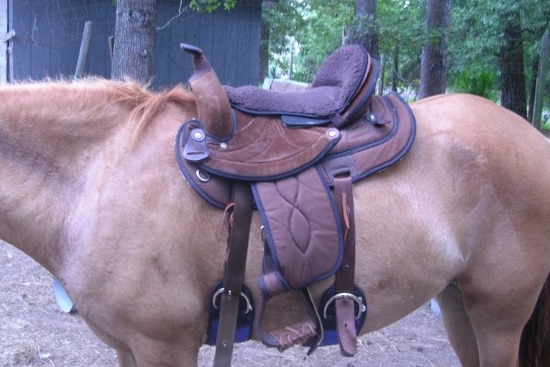
This is a question we see not uncommonly on horse forums, and one we were asked a few months ago by a customer’s customer. (Not with this picture - just to be clear!) As with anything to do with saddles and horses, there isn’t one simple answer. But this one is comparatively simple. We have come up with five reasons why it may be happening, and are open to learning about more…
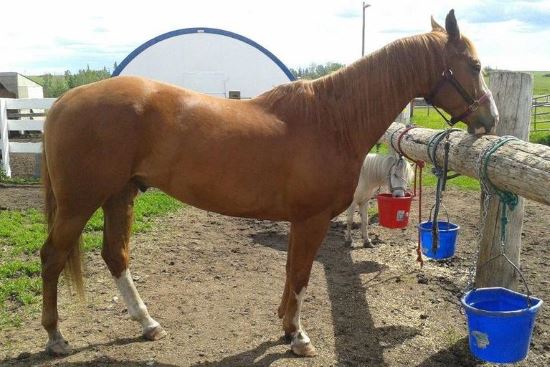
First of, you have to make sure the saddle really is lifting off in the back and it doesn’t just look like it. There are a couple things that mimic lifting up at the back. The first is a downhill horse. If you put a saddle on this horse, the back of the saddle will be higher than the front and the saddle will look downhill, because the horse is downhill. You aren’t going to change that. So check and see if the saddle contacts at the back or not. You might be trying to fix a problem that really isn’t there.
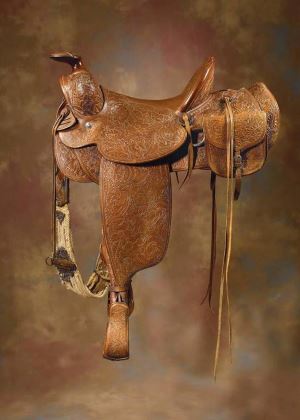
The other thing that can mimic lifting off is skirts that are really lifted up relative to the tree for some reason. On this beautiful historic saddle, the skirts are raised behind the back jockeys, and it could look like the whole tree is lifted off the horse’s back. Again, check and see if the bars are contacting the horse OK. If so, you don’t have a problem.
However, if you do have a situation where the saddle really is lifting up at the back, the most common reason is that the saddle is too wide for the horse. This can be because of too wide a bar spread or too wide a bar angle. If the horse is narrower than the saddle in the wither area, then the front will tip forward until it connects with something to hold it up.
Too wide a bar spread
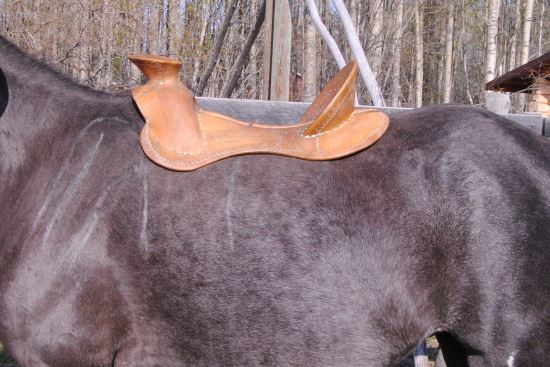
If the bar spread is too wide, but the angle is OK, then the whole front bar pad will connect – eventually – but too far down the horse’s side. So the tree tips forward, lifting the back of the saddle off the horse
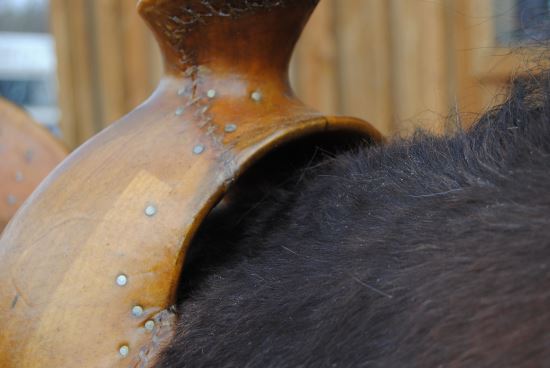
If it is a major mismatch, sometimes the first thing to contact is the gullet on the top of the withers. (This is the largest no-no in saddle fit, in case anyone doesn’t know this.) Whether it hits at the gullet or the bars do contact eventually, the result of a too wide spread between the bars is a saddle that tilts forward on the horse, lifting at the back end. (Please note that the gullet can be too low and contact without the saddle being too wide. There’s more information on that on our Avoiding the Withers page. However, in that case, the saddle doesn’t lift up at the back.)
Too wide a bar angle
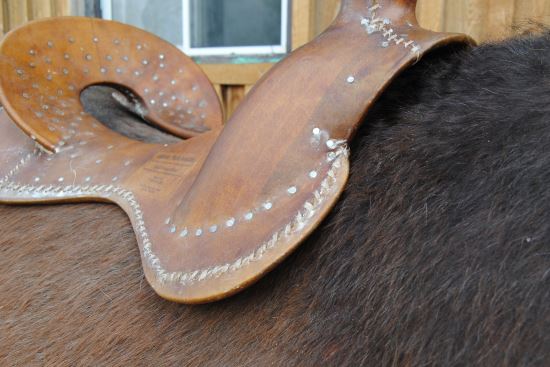
If the angle is too wide, then the bottom of the bars don’t contact where they should to hold the saddle in place, and the saddle “falls down” in front till something is narrow enough to contact the horse. That would usually be the upper edge of the bar or the upper edge of the front bar tip. This results in really high pressure areas where the saddle does connect. And from the side it looks the same as too wide a bar spread – a saddle that “falls down” in front, lifting the back off the horse.
Too much rock for the horse
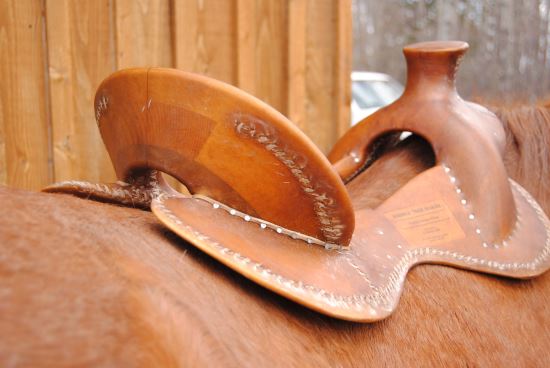
A third reason saddles lift off at the back is because there is too much rock in the tree for a horse with a straighter back. When the saddle is just set on the horse, it may look level because the center of the bar is carrying the weight with both ends lifted off the horse. (It is hard to see, but the front of the bar is off the horse as well as the back of the bar in this picture.)
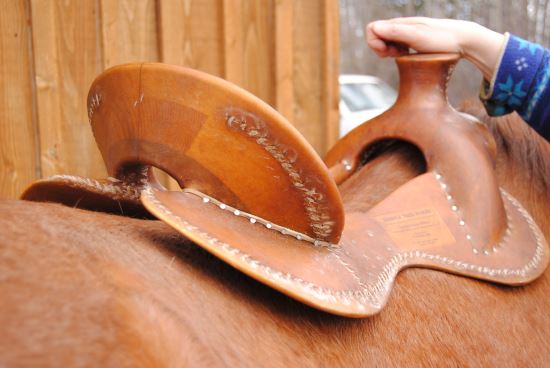
But when the saddle is cinched down on the horse, it will tilt forward and lift up at the back. Now, this won’t happen with a true centerfire rigging position because the pull is in the center of the saddle, but the vast majority of saddles have the rigging position somewhere ahead of centerfire, so this will generally happen. In the pictures above, you can see the difference from the tree just being set on the horse and when downward pressure is placed on the horn, simulating it being cinched up.
So that’s the first three reasons. We’ll deal with the rest in a later post.
